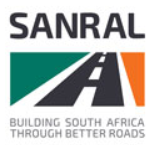'Outa misleads the public'
On 23 March 2016 Sanral, through its legal representatives requested Outa to substantiate its claims of irregularities in the construction and management of the Gauteng Freeway Improvement Project. It was also asked to provide all information including detailed engineering reports, research and financial calculations on which allegations contained in a recently published report are based. Outa was requested to respond by 6 April 2016 but failed to do so.
"We have not yet received the information requested," says Vusi Mona, spokesperson for Sanral.
Outa has suggested that Sanral is corrupt, incompetent and has colluded with the construction industry in a recently published 'research report.' To suggest that Sanral's conduct falls within the same category as the widely reported and now conceded collusion which occurred within the construction industry is defamatory and actionable. Outa incorrectly assumes and presumably derives comfort from the fact that it presents itself as an organisation which ostensibly operates in the public interest. It presumably assumes that its representatives are immune from the consequences of its actions. Outa's assertions in the report have been recklessly advanced.
"The collusive practices by the construction industry are being dealt with within the relevant structures in Government including ourselves. These perceptions created by Outa cannot be left unchallenged by Sanral because they are misleading the public, the media and current and potential investors," he says.
"In terms of Outa's own mandate, it has a responsibility towards the public to provide the factual basis for its allegations. It has persistently failed to do so. It is self-servingly misrepresenting the position in support of its stance that the public should ignore civil summonses," says Mona.
Sanral has sent Outa a list of hundreds of questions and requests for clarifications based on the organisation's 29 page "position paper".
Alex van Niekerk, project manager for the GFIP, says Outa's document can be dismissed as early as its second page where it is recorded that the Gauteng Freeway network consists "of approximately 185 kilometres". The actual length is 201km which undermines the veracity of all of the other figures quoted in the document which rely on the length of the Gauteng Freeway network.
In the first case study referred to in the report, Outa confuses the unit of measurement. It incorrectly extracts construction costs in Europe and bases its calculations on these values in "millions" of Euros instead of the "billions" stated in this study. This constitutes an almost 100 000% error. Was this done deliberately to create perceptions or just plainly to misinform the public? Based on Outa's own calculation, but with the correct values inserted (billions not millions), the GFIP freeways are in fact 99,7% cheaper than the comparable European costs.
The second case study shows that one should not approach construction cost estimates in urban environments in the manner in which Outa conducted its "research".
Van Niekerk says that without escalating the 2004 figure to 2010, and applying a R7 to $1 US exchange rate that was used by Outa, this case study derived cost amounts to R43 million per lane-kilometre. This is equivalent to R387 million per centre line-kilometre when applying the Outa arithmetic. Applying these numbers in the Outa calculation, the GFIP freeways were at least 77% cheaper than the 13 relevant projects that should have been considered by Outa.
The majority of the remaining case studies mostly relied upon by Outa in its report primarily compare rural roads in Africa and elsewhere in the world with the modern GFIP freeways. Outa itself stated that one needs to compare "like with like".
These inherently defective comparisons were utilised by Outa to support its fatally flawed conclusion that Sanral has been overcharged by 321% for the construction of the GFIP.
Van Niekerk says Outa quotes "regional planners," "engineers" and "research teams" without naming them or detailing their qualifications. They refer to "bench mark studies" and "generic models" without indicating their relevance in the South African context. Outa also fails to take into account many of the elements of the GFIP such as the costs of retaining walls, drainage structures and the relocation of existing services such as power lines and pipelines.
The GFIP is a much-needed multiphase project to upgrade the Gauteng freeway network. Only the first phase has been completed. The expanded freeway had to be constructed to address a 20-year backlog. The GFIP freeway network currently carries more than 800 000 vehicles and in excess of one million persons each day.
"The GFIP remains an integral part of the transport solution for the Gauteng province. It has, and will, continue to add value to the surrounding infrastructure, improve the quality of a daily commute and sustain the economy of Gauteng, contributing to its future growth. Without a sustainable financing mechanism to construct the more than 150 km of planned new freeways in Gauteng, the province's economy will be negatively affected as will the quality of life of the commuting public.
"Outa reached its conclusion before doing its research and millions of commuters are making their decision to pay e-tolls based on false findings," Mona concludes.
